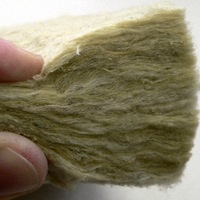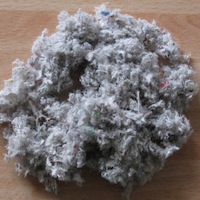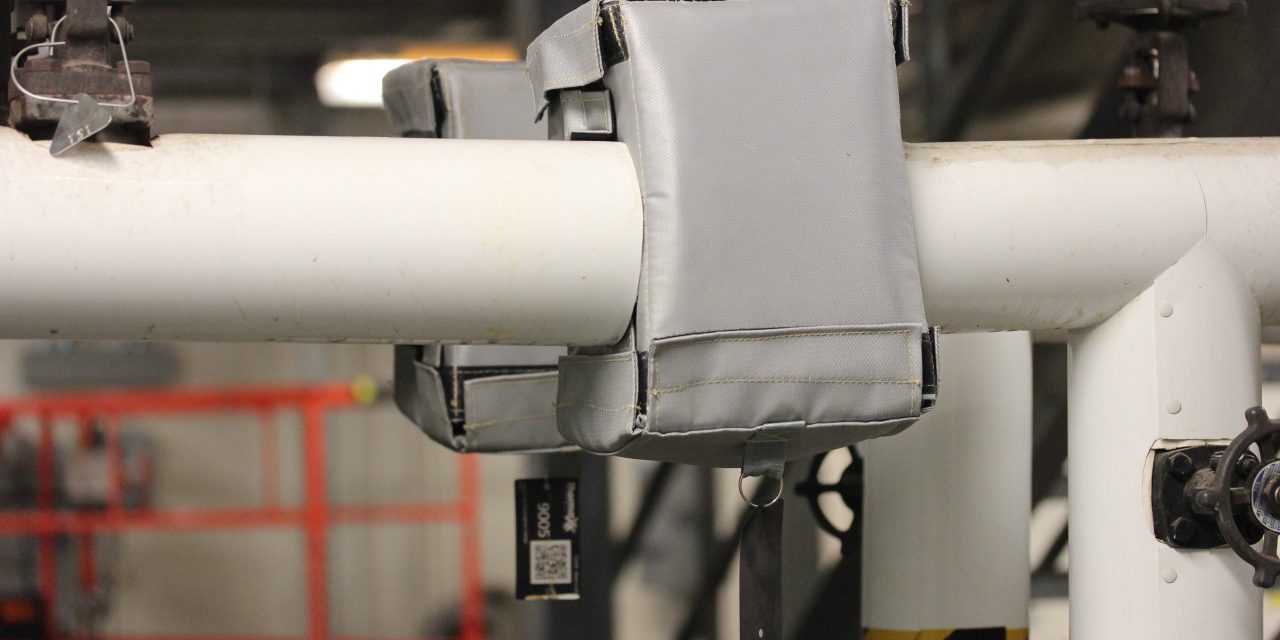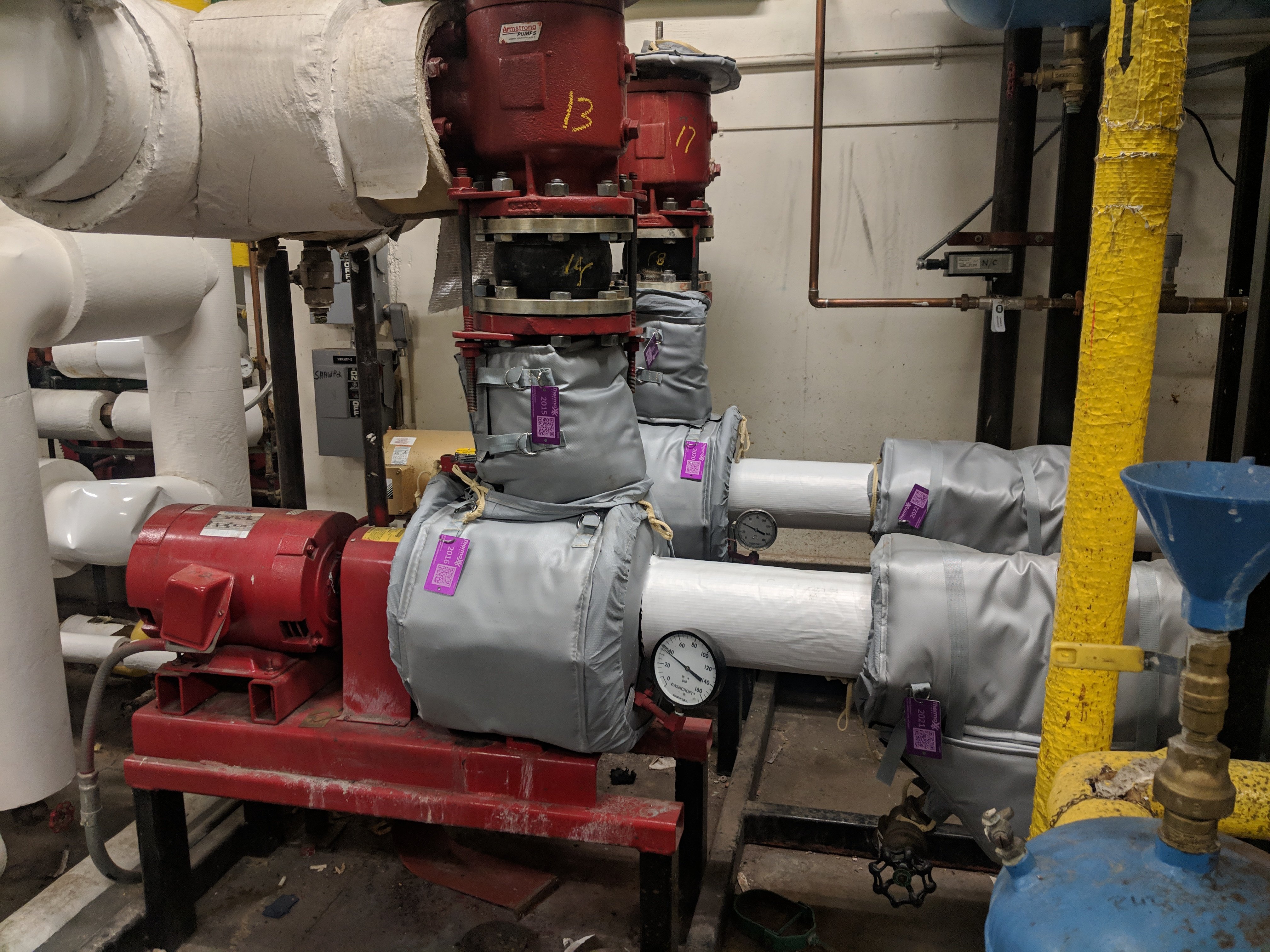5 Most Common Thermal Insulation Materials
Most Common Thermal & Heat Insulation Materials
- Fiberglass Insulation
- Mineral Wool
- Cellulose
- Polyurethane Foam
- Polystyrene
- Other Common Insulation Materials
- Best Thermal Insulation Material for Steam Pipes
- Mineral Wool vs. Fiberglass
- Fiberglass vs. Cellulose
- Traditional vs. Advanced Pipe Insulation
- What to Consider When Choosing Your Pipe Insulation
- Learn More with Thermaxx Jackets
There are plenty of cheap and common insulation materials available on the market today. Many of these have been around for quite some time. Each of these insulation materials have their own ups and downs. As a result, when deciding which insulation material you should use, you should be sure to be aware of which material would work the best in your situation. We have considered differences like R-value, price, environmental impact, flammability, sound insulation and other factors below. Here are the 5 most common types of insulation materials:
| Insulation Material | Price / sq. ft. | R-Value / in | Environmentally friendly? | Flammable? | Notes |
| Polyurethane Foam | $$$ | R-6.3 | No | Yes | Makes a great sound insulator |
| Mineral Wool | $$ | R-3.1 | Yes | No | Does not melt or support combustion |
| Cellulose | $$ | R-3.7 | Yes | Yes | Contains the highest amount of recycled content |
| Fiberglass | $ | R-3.1 | Yes | No | Does not absorb water |
| Polystyrene (EPS) | $ | R-4 | No | Yes | Difficult to use around imperfections |
1. Fiberglass Insulation

Fiberglass is the most common insulation used in modern times. Because of how it is made, by effectively weaving fine strands of glass into an insulation material, fiberglass is able to minimize heat transfer. The main downside of fiberglass is the danger of handling it. Since fiberglass is made out of finely woven silicon, glass powder and tiny shards of glass are formed. These can cause damage to the eyes, lungs, and even skin if the proper safety equipment isn’t worn. Nevertheless, when the proper safety equipment is used, fiberglass installation can be performed without incident.
Fiberglass is an excellent non-flammable insulation material, with R-values ranging from R-2.9 to R-3.8 per inch. If you are seeking a cheap insulation this is definitely the way to go, though installing it requires safety precautions. Be sure to use eye protection, masks, and gloves when handling this product.
2. Mineral Wool

Mineral wool actually refers to several different types of insulation. First, it may refer to glass wool which is fiberglass manufactured from recycled glass. Second, it may refer to rock wool which is a type of insulation made from basalt. Finally, it may refer to slag wool which is produced from the slag from steel mills. The majority of mineral wool in the United States is actually slag wool.
Mineral wool can be purchased in batts or as a loose material. Most mineral wool does not have additives to make it fire resistant. However, it is a non-combustible material, so can prevent the spread of fires up to 1,400 degrees Fahrenheit, but may not always be the best option when extreme heat is present. Mineral wool has an R-value ranging from R-2.8 to R-3.5.
3. Cellulose

Cellulose insulation is perhaps one of the most eco-friendly forms of insulation. Cellulose is made from recycled cardboard, paper, and other similar materials and comes in loose form. Cellulose has an R-value between R-3.1 and R-3.7. Some recent studies on cellulose have shown that it might be an excellent product for use in minimizing fire damage. Because of the compactness of the material, cellulose contains next to no oxygen within it. Without oxygen within the material, this helps to minimize the amount of damage that a fire can cause.
So not only is cellulose perhaps one of the most eco-friendly forms of insulation, but it is also one of the most fire resistant forms of insulation. However, there are certain downsides to this material as well, such as the allergies that some people may have to newspaper dust. Also, finding individuals skilled in using this type of insulation is relatively hard compared to, say, fiberglass. Still, cellulose is a cheap and effective means of insulating.
4. Polyurethane Foam

While not the most abundant of insulations, polyurethane foams are an excellent form of insulation. Nowadays, polyurethane foams use non-chlorofluorocarbon (CFC) gas for use as a blowing agent. This helps to decrease the amount of damage to the ozone layer. They are relatively light, weighing approximately two pounds per cubic foot (2 lb/ft^3). They have an R-value of approximately R-6.3 per inch of thickness. There are also low density foams that can be sprayed into areas that have no insulation. These types of polyurethane insulation tend to have approximately R-3.6 rating per inch of thickness. Another advantage of this type of insulation is that it is fire resistant.
5. Polystyrene

Polystyrene is a waterproof thermoplastic foam which is an excellent sound and temperature insulation material. It comes in two types, expanded (EPS) and extruded (XEPS) also known as Styrofoam. The two types differ in performance ratings and cost. The more costly XEPS has a R-value of R-5.5 while EPS is R-4. Polystyrene insulation has a uniquely smooth surface which no other type of insulation possesses.
Typically the foam is created or cut into blocks, ideal for wall insulation. The foam is flammable and needs to be coated in a fireproofing chemical called Hexabromocyclododecane (HBCD). HBCD has been brought under fire recently for health and environmental risks associated with its use.
Other Common Insulation Materials
Although the items listed above are the most common insulation materials, they are not the only ones used. Recently, materials like aerogel (used by NASA for the construction of heat resistant tiles, capable of withstanding heat up to approximately 2000 degrees Fahrenheit with little or no heat transfer), have become affordable and available. One in particular is Pyrogel XT. Pyrogel is one of the most efficient industrial insulations in the world. Its required thicknesses are 50% – 80% less than other insulation materials. Although a little more expensive than some of the other insulation materials, Pyrogel is being used more and more for specific applications. Other materials used can be ceramic fiber, flexible closed cell sheet insulation and mass loaded vinyl.
Asbestos
Best Thermal Insulation Material for Steam Pipes
The best material for steam pipe insulation is the type you can remove to perform regular inspections. While fiberglass has been a popular choice in the past, it cannot be taken off to allow for inspections, which means it's no longer the best material for steam pipes.
A Thermaxx insulation jacket is an ideal option for steam pipe insulation. These jackets are easily installed and removed when necessary without requiring specialized skills, and the insulation types used are determined by your specific requirements. We offer Thermaxx jackets in numerous normal pipe sizes, ranging from 2 to 24 inches. Our jackets are designed have a touch temperature of 120 degrees or less to reduce energy loss and be more skin-friendly.
Finally, our jackets are the best for steam pipe insulation because they are customizable. If you have a pipe that is larger than a standard size, oddly-shaped or otherwise non-standard, we can design and manufacture one specific for your system. Our jackets help to keep moisture out, improving the lifetime of the insulation and underlying pipes, resulting in increased cost-effectiveness.
Mineral Wool vs. Fiberglass
Mineral wool and fiberglass are two common types of thermal insulation. Mineral wool is made from steel slag and basalt, making it more eco-friendly than other insulation types. A manufacturer makes it by spinning molten rock quickly while blowing cool air on it. Characteristics of mineral wool insulation include the following:
- It is heavier and denser than fiberglass, giving it a higher R-value.
- Mineral wool can be challenging to install and often requires professional assistance.
- It is more resistant to fire, mold, fungus, and moisture than some other materials.
- Mineral wool can often be more expensive.
- It is often more durable than materials like fiberglass.
Fiberglass is made by using fine glass fibers from materials like soda ash, borax, silica sand, and limestone. Check out these fiberglass characteristics:
- It can be more flexible, making it easier to accommodate obstructions.
- It is often easier to install with professional assistance.
- Fiberglass is also highly fire-resistant.
Fiberglass and mineral wool have advantages and disadvantages, making it crucial to weigh all the factors.
Fiberglass vs. Cellulose
Cellulose is another type of pipe insulation. It is made with recycled newspapers, cardboard, and magazines, will not itch during installation and comes in several R-values. Cellulose works as thermal insulation and has a high resistance to mold and mildew. Cellulose also has the benefit of being fire retardant.
Fiberglass offers improved protection against mildew and mold compared to cellulose and has an easier installation process. That said, cellulose has a more in-depth R-value.
Cellulose may settle after installation, which can cause it to lose its R-value. On the other hand, fiberglass is known for retaining its original form and can last longer.
Finally, cellulose is fire retardant like fiberglass, but it can pose other safety risks because it starts turning to dust over time. As a result, the chemicals used to make the cellulose are released into the air and can be harmful.
Traditional vs. Advanced Pipe Insulation
Traditional steam pipe insulation is often made from fiberglass. You have to use it with an all-service jacket, which is a reinforced paper that is laminated to a layer of lightweight foil. These conventional materials offer some benefits, such as being lightweight and low-cost. However, traditional insulation can present challenges like:
- Increased risk of moisture: Since you have to cut a hole in fiberglass insulation, you have a greater risk of water entering the pipe system, raising the risk of corrosion under insulation (CUI).
- Time-consuming inspections: As mentioned above, you will need to cut into the fiberglass insulation to get to the pipe and perform an inspection. This process is more time-consuming than removing an insulation jacket quickly.
- Decreased performance: Aside from cutting into the fiberglass, which already decreases its performance, the material can also settle or become compacted, reducing the thickness and altering performance.
- Negative environmental impacts: Fiberglass cannot be reused or recycled, unlike a thermal jacket that can be removed.
When we say “advanced pipe insulation,” we are referring to removable thermal jackets. Thermal insulation jackets offer numerous benefits that make them one of the best choices for pipe insulation. Advantages of using our Thermaxx jackets include:
- Lowered energy costs: Thermaxx insulation jackets reduce the cost of energy, allowing them to pay for themselves in as little as a year.
- Easier maintenance and inspection: You can easily remove our thermal jackets to perform routine inspection or maintenance on your pipes.
- Less waste: Unlike other materials that you must cut into and replace when you do inspections, you can simply remove our jackets whenever necessary. Put them back on to reduce overall waste.
- Improved equipment life: Your pipes remain protected beneath Thermaxx insulation jackets, reducing their exposure to weather, elements, and accidental damage, which can prolong their life.
- Better workplace safety: Thermal jackets help improve workplace safety by preventing workers from coming in direct contact with high-temperature pipes.
- Increased corrosion prevention: We offer Thermaxx jackets for wet and dry applications and water drainage solutions, helping prevent CUI.
What to Consider When Choosing Your Pipe Insulation
When choosing pipe insulation, it's crucial to consider all the factors. Everything from the materials and costs to where you plan to use the insulation play essential roles in the type of insulation you will need for your pipes. Factors to consider include:
- Material: As discussed above, different types of insulation offer unique benefits and disadvantages. Consider which ones would work best for your application. Thermaxx insulation jackets are useful for many applications, making them a top material choice.
- Cost: Cost is another factor to consider. Some materials for pipe insulation have higher initial costs but pay for themselves over time. Others are low-cost installations, which can be useful if you're on a budget. Finding the right insulation that is the most cost-effective for your operations and budget is the ideal solution.
- Thickness: The thickness of your pipe insulation is something else to consider. Are you insulating pipes indoors or outdoors? Will they be exposed to extreme temperatures or weather? You need pipe insulation that is thick enough for how you intend to use it.
- Measurement: How large are the pipes you need to insulate? This measurement will play a role in how much you need and influences the thickness you need, affecting the materials you can use and their costs.
Summary
There are many forms of insulation available, each with their own set of properties. Only by researching each kind thoroughly can you discover which will be the right kind for your particular needs. As a quick overview:
- Aerogel is more expensive, but definitely the best type of insulation.
- Fiberglass is cheap, but requires careful handling.
- Mineral wool is effective, but not fire resistant.
- Cellulose is fire resistant, eco-friendly, and effective, but hard to apply.
- Polyurethane is an all around good insulation product, though not particularly eco-friendly.
- Polystyrene is a diverse insulation material, but its safety is debated.
Ready to learn more?
You can contact us or email info@thermaxxjackets.com. Still looking? Here are some great next steps:
- You can research the best insulation materials for your specific application
- Learn about the benefits of working with Thermaxx.
Related Posts & Helpful Resources:

Thermaxx Jackets
Thermaxx Jackets was founded over 25 years ago with a single purpose: to help our clients save energy with removable insulation blankets when traditional stay-in-place insulation is not practical. Our dedication to this purpose has resulted in a long list of customers who have saved money thanks to Thermaxx Jackets! Combining expertise in heat loss, wireless monitoring, insulation design, and several other disciplines, we’ve become the #1 provider and fabricator of removable insulation jackets and covers. The Thermaxx Sales and Service teams are experienced and trained to provide clients with the most timely and cost-effective solution.
Categories
- removable insulation
- thermaxx jackets
- energy savings
- savings
- energy efficiency
- safety
- pipe insulation
- energy
- case study
- insulation materials
- thermal insulation
- heat loss survey
- heat loss
- energy loss
- hot insulation
- fiberglass
- installation
- steam
- New York
- custom insulation
- NYC Case Study
- boiler
- university
- Connecticut
- reusable insulation








